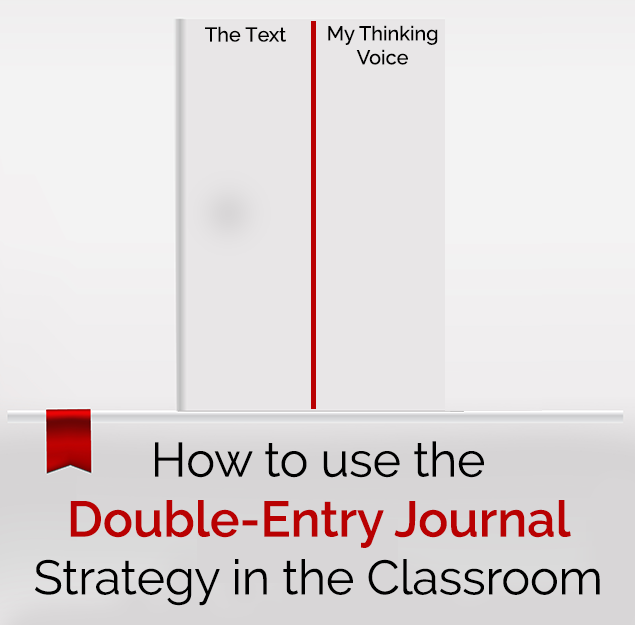What is the Double-Entry Journal Strategy?
Posted by Network Support · Leave a Comment
Enhance reading comprehension and critical analysis skills by using a Double-Entry Journal in the classroom. This organized learning strategy will add depth to any reading assignment.
What is the Double-Entry Journal strategy?
Journal writing has always been a time-honored method of recording one’s thoughts or feelings. Similar to this is the Double-Entry Journal strategy, encourages students to record their thoughts or responses to a text they have read. The act of expressing and recording enables students to connect and interact with the reading in turn enhancing their comprehension of the content.
This strategy comprises of a two-column journal. Textual information that requires further questioning, clarification, expansion or understanding, like a quote, phrase, sentence or even a concept is written down in the left column. Students are to analyze this information and note their reflections, reactions, ideas or analysis in the right column.
Benefits of the Double-Entry Journal strategy
The application of the Double-Entry Journal strategy facilitates collaborative learning and helps students to:
- Build their vocabulary
- Learn new concepts
- Express, justify or rationalize their opinions using evidence from the text
- Understand the reading material
- Activate their prior knowledge and link it to new information
- Interact and connect with the text as students are given the opportunity to “respond or reply” to the author through their responses
Incorporating the Double-Entry Strategy in the classroom
Application of this strategy first starts with its introduction. Teachers can introduce, model and explain the uses and guidelines of the strategy to their students. As an easy way of creating the journal, fold a paper lengthwise, to demonstrate the two columns. Title the left column as “Text notes” and the right column as “Impressions/Reflections.” Select a passage in a text and demonstrate the strategy by writing down a quote on the left column and entering a comment, idea, connection or reflection on the right.
You can also divide your whiteboard into two columns and engage the students in the strategy as a group. Ask one student to be the reader, reading through the selected passage. During a pause in the reading, ask the students to list any sections of the text that was unfamiliar, caught their interest or made an impression and write them down in the left column. Encourage students to discuss and write down their impressions or reflections of the specific text in the right column.
Once students have a grasp on the strategy, divide them into groups and have them fill out a Double-Entry Journal page by brainstorming together. At this point you can point out that students can relate the text to either self (text-to-self), another reading portion or text (text-to-text) or to the world around them (text-to-world.)
After filling out their journal, students can transfer the information by presenting and discussing their journals collectively with the class. You can also ask them to rationalize how one or more of the connections helped them understand the text better.
The Double-Entry Journal strategy can also be used in the following ways:
- As a study guide especially when learning new and specific information such as vocabulary and events
- As a closure activity to help students reflect on the information they have read
- As a quick assessment tool to understand the reading comprehension of the students
Thus, the Double-Entry Journal strategy facilitates learning in the classroom by encouraging students to improve their reading comprehension, expression and justification of their opinions and to analyze and find connections between information.
Like this article for teachers?
Browse the Professional Learning Board COURSE CATALOG to find related online courses for teachers in your state. Professional Learning Board is a leading provider of online professional development classes that teachers use to renew a teaching license or renew a teaching certificate.





